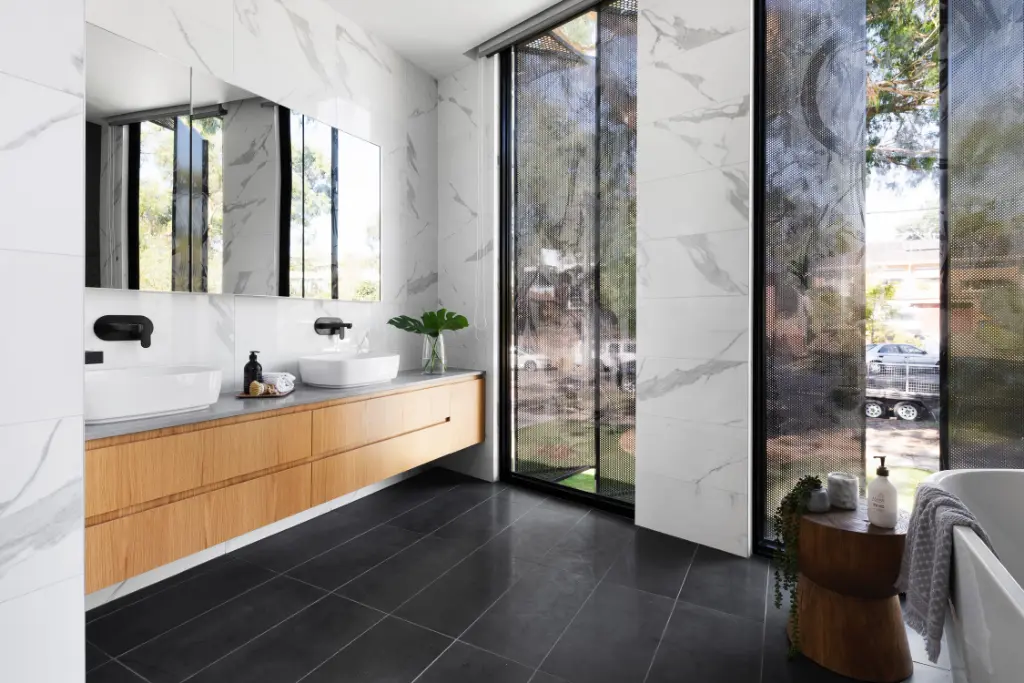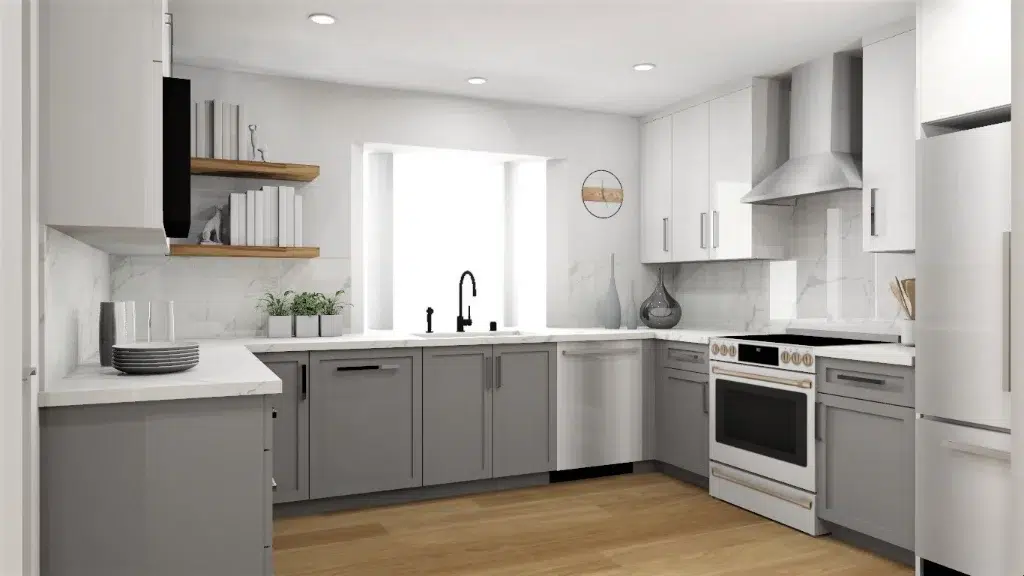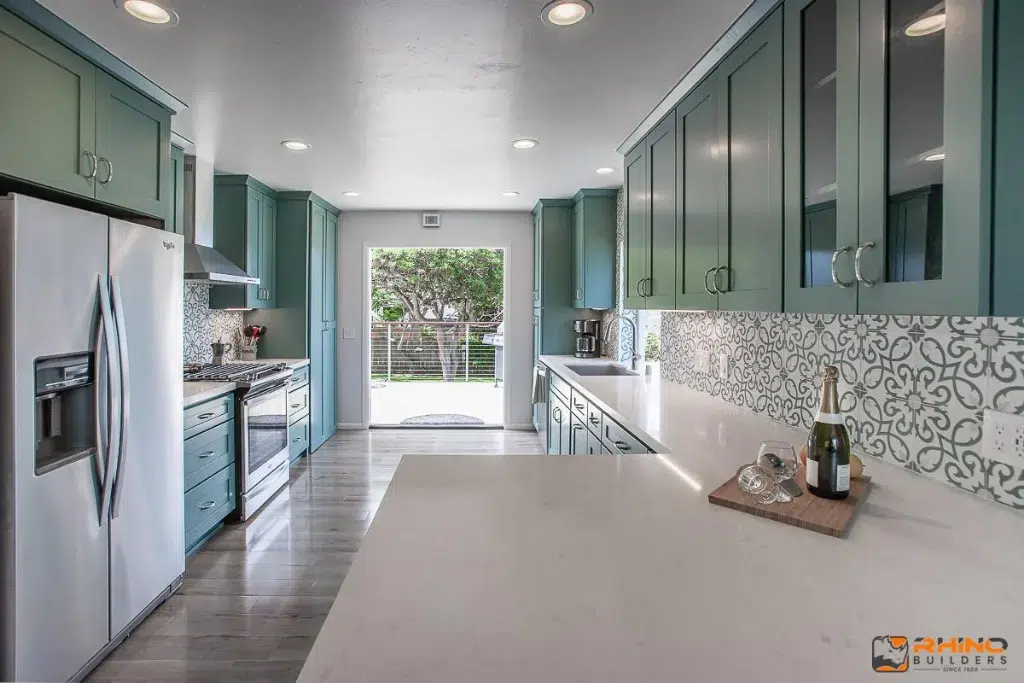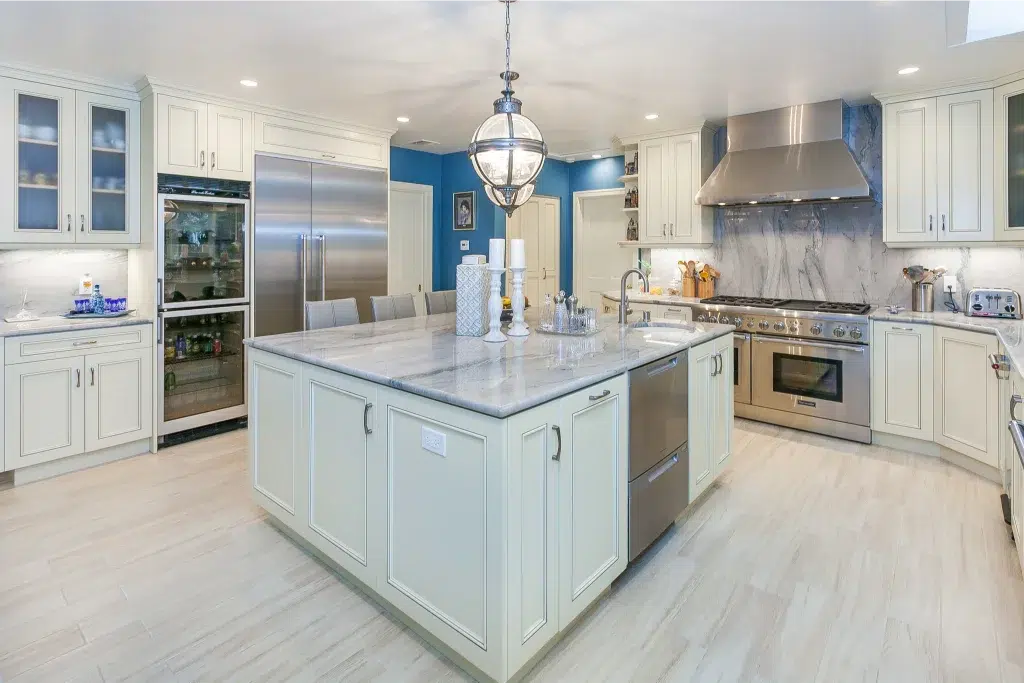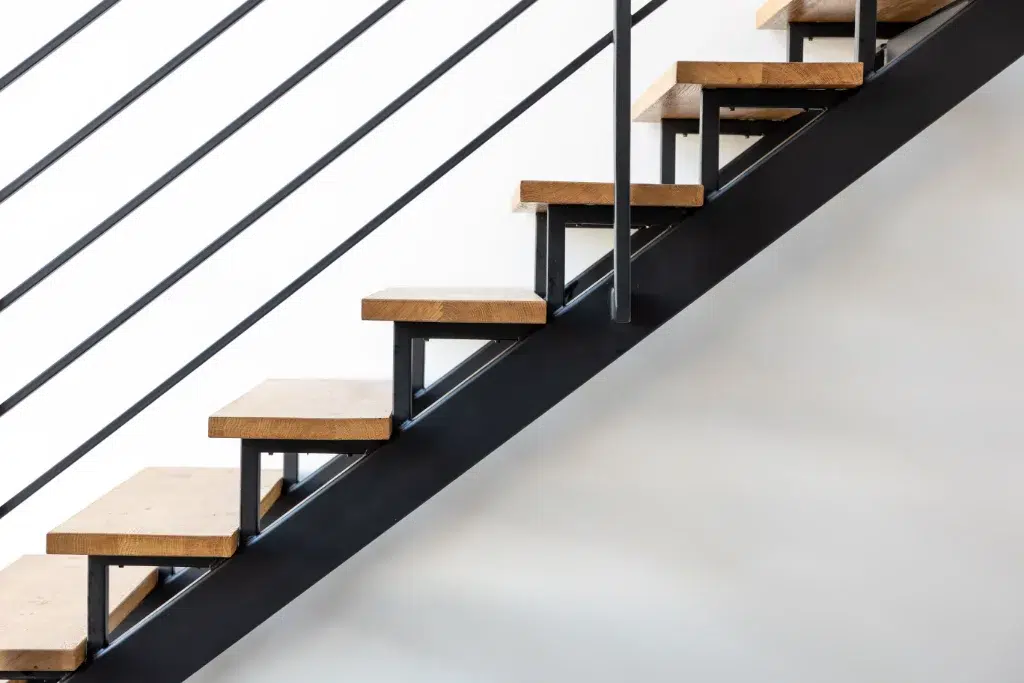As a homeowner in San Diego, you know that outdoor living spaces are essential. With over 300 days of sunshine every year, patios provide the perfect opportunity to enjoy the beautiful weather. However, plain concrete patios lack visual interest and charm. This is where patio pavers come in. With the right pavers, you can create an inviting, stylish outdoor space perfect for relaxing and entertaining.
This article will explore the top 2024 patio paver ideas to transform your backyard into a Mediterranean-style oasis, modern sanctuary, or any aesthetic you desire. We’ll cover popular paver shapes, patterns, colors, and materials to help you design your dream patio. Read on to discover inspiring photos of pavers in San Diego backyards and start planning your new outdoor living space today!
Are Patio Pavers Right for Your San Diego Home?
Durability and Longevity
Patio pavers are designed to withstand the elements, including the heat and occasional rain San Diego experiences. Made from materials like natural stone, concrete, or brick, patio pavers can last for decades with minimal maintenance required. Compared to wood or tile, patio pavers are a durable and long-lasting choice for outdoor spaces.
Design Flexibility
Patio pavers offer homeowners a lot of flexibility in designing their perfect outdoor oasis. Pavers come in a variety of shapes, sizes, styles, and colors, allowing you to create custom patterns and designs. Curving paths, intricate mosaics, and geometric shapes are all possible with patio pavers. You can also combine different paver styles and colors to achieve a one-of-a-kind look for your patio.
Low Maintenance
Once installed, patio pavers require very little maintenance to keep them looking their best. Simply sweep debris from the surface and mop up any spills. For tough stains, a mild detergent and scrub brush can be used. Re-sealing the pavers every few years will help protect them from weathering and staining. Compared to wood decks or concrete patios that require frequent staining, sealing and repairing, patio pavers are an easy-to-care for choice.
Cost Effective
While the initial investment in quality patio pavers may seem high, they are actually quite budget-friendly in the long run. Because they last for decades and require little maintenance, the total cost of ownership is lower than many other outdoor surface options. Patio pavers can also increase the value of your home and are considered an attractive feature to potential homebuyers. For homeowners in San Diego looking for a cost-effective way to enhance their outdoor living space, patio pavers are an ideal solution.
Top 5 Patio Paver Materials for Warm Weather
Natural Stone
For a classic, high-end look, natural stone like granite, slate, and sandstone are excellent choices for patios in warm climates. Their dense composition helps them retain less heat than other materials. However, natural stone pavers tend to be expensive and may stain over time. They typically require professional installation and sealing to protect them from weathering.
Concrete
Concrete pavers are very durable and budget-friendly. They come in a variety of shapes, sizes, and colors to suit any style. Although concrete absorbs and retains heat, its light color helps reflect the sun’s rays. Concrete pavers usually last 15-30 years and require little maintenance. For the best results, choose pavers with an aggregate like quartz that is resistant to weathering and stains.
Brick
Like natural stone and concrete, brick is also very durable and complements many architectural styles. Brick pavers tend to be slightly more expensive than concrete but cheaper than natural stone. They absorb little heat and moisture, but their uneven, porous surface requires periodic sealing. Properly installed brick pavers can last 30-50 years.
Porcelain
Porcelain pavers combine the visual appeal of natural stone with superior performance. Made from dense, ceramic clay and kiln-fired at high heat, porcelain pavers resist fading, staining, scratching and weathering. They absorb almost no heat or moisture and never require sealing. Although porcelain pavers tend to cost slightly more upfront, their longevity and minimal maintenance needs make them a worthwhile investment. They can last 50 years or more with proper installation.
Travertine
A type of limestone, travertine is a popular choice for patios and pool decks. It comes in warm, earthy colors and has a distinctive porous, pitted surface. Like other natural stones, travertine pavers retain heat and moisture, so they require sealing to prevent staining. Travertine pavers typically last 15-30 years. For high-traffic areas, choose a tumbled or honed travertine that has been treated to reduce slipping.
Design Ideas: Layouts and Patterns for Patio Pavers
When designing your patio space in San Diego, you have many layout and pattern options to consider for your pavers. The design you choose can significantly impact the overall look and functionality of your patio.
Geometric Patterns
Geometric patterns with squares, circles, and triangles are popular, eye-catching choices for patios. A square grid or herringbone pattern creates a symmetrical, orderly look. Hexagonal pavers provide an honeycomb pattern. For a striking circular focal point, consider a round paver medallion in the center of your patio surrounded by bands of pavers in a contrasting color or texture.
Random and Freeform Patterns
For a more casual look, random and freeform paver patterns are ideal. Pavers of varying shapes, sizes, and colors are placed in an informal, unstructured manner. Curving pathways or patios with ameandering edge also provide a naturalistic feel. This freeform style is a perfect complement to tropical, Mediterranean or rustic home styles.
Bordered and Framed Patterns
Creating borders, frames and accents with pavers of a different color, texture or shape is an easy way to define spaces and make a design statement. For example, use square pavers for the main patio surface but mark a circular area in the center with a ring of brick or stone pavers. Or, border the entire patio perimeter with a row of pavers that contrast with the field pavers.
Pavers come in a variety of natural stone, brick, concrete and tile materials with an array of earthy hues and texturesto mix and match. With some imagination, you can craft a custom patio design that suits your unique style and provides the perfect outdoor living space to enjoy San Diego’s temperate climate. Consider consulting a landscape designer to help determine the best layout and patterns for your needs and budget. They can also suggest suitable materials based on factors like durability, slip-resistance, and cost.
Maintaining and Caring for Your Patio Pavers
Once you have installed patio pavers for your outdoor space, it is important to properly maintain them to ensure their longevity and aesthetic appeal. You should brush off any dirt or debris from the pavers after each use. Periodically inspect the gaps between pavers and remove any weeds or plants growing in between. You can fill larger gaps with polymeric sand or sealant to prevent weed growth.
Sealing the Pavers
Sealing your patio pavers every few years with a acrylic or polyurethane sealant will help protect them from weathering and stains. Sealant creates a protective coating while still allowing the natural stone or concrete to breathe. It is best to seal pavers after they have had time to cure for at least 30 days after installation. You will need to clean and prepare the pavers, then apply 2-3 coats of sealant, waiting for each coat to dry completely between applications. Sealant will need to be reapplied every 3-5 years to maintain protection.
Pressure Washing
For stuck-on dirt or grime, you may need to pressure wash your patio pavers. Be very careful to use a wide spray tip and keep the pressure at a minimum, around 500 to 1000 PSI. Get too close or use too much pressure, and you can damage the pavers or dislodge the sand between them. It is best to test in an inconspicuous area first to determine the proper distance and pressure for your pavers.
Repairing Any Damage
Inspect your patio pavers regularly for any signs of damage like chips, cracks, or stains, and repair them promptly. You can use a concrete patch compound to fill in small chips and cracks. For stains, try using a commercial paver stain remover or a mixture of hydrogen peroxide and water. For more significant damage, you may need to remove and replace individual pavers. Be sure to note the style and color of your pavers so you can get matching replacements.
With regular maintenance like brushing, weeding, sealing, pressure washing when needed, and repairing any damage, your patio pavers can provide an attractive and long-lasting addition to your outdoor living space. Following a consistent schedule of inspections and upkeep will help keep your pavers looking their best for many years to come.
Frequently Asked Questions About Patio Pavers Ideas
What is the best paver to use for a patio?
The best paver for a patio depends on your aesthetic preferences, budget, and the climate of your area. Generally, concrete pavers are popular due to their durability, variety of designs, and cost-effectiveness. Natural stone pavers, such as granite or sandstone, offer a luxurious appearance but come at a higher price. Brick pavers provide a classic look and are also quite durable. Consider the style of your home and outdoor space to choose the best option for you.
Are pavers a good idea for a patio?
Yes, pavers are an excellent choice for a patio. They are highly durable, easy to maintain, and come in a wide range of styles, colors, and materials to suit any design preference. Pavers can handle heavy foot traffic and harsh weather conditions, making them a long-lasting option. Additionally, if a paver gets damaged, it can be easily replaced without disturbing the rest of the patio.
Is a paver patio cheaper than concrete?
The cost of a paver patio can vary widely based on the type of pavers you choose and the complexity of the installation. Generally, a basic paver patio can be more expensive upfront than a poured concrete patio due to the cost of materials and labor. However, pavers can offer better long-term value due to their durability and ease of maintenance. They are less likely to crack and can be repaired more easily than concrete.
What is the best pattern for patio pavers?
The best pattern for patio pavers depends on your aesthetic goals and the size of the patio. Some popular patterns include:
- Herringbone: This pattern is very strong and works well in high-traffic areas.
- Basketweave: A classic pattern that adds a timeless look to any patio.
- Running Bond: Simple and versatile, this pattern makes small spaces appear larger.
- Circular: Adds a unique and elegant touch to your patio design.
Choose a pattern that complements your home’s style and the overall design of your outdoor space.
Should I use cement between pavers?
Using polymeric sand between pavers is generally recommended over cement. Polymeric sand stabilizes the pavers and prevents weed growth while allowing for flexibility, which is crucial for preventing cracks caused by shifting ground or weather changes. Cement, on the other hand, can crack over time and may not provide the same flexibility and durability as polymeric sand.
What is the best material to lay pavers on?
The best material to lay pavers on is a well-prepared base consisting of compacted gravel and a layer of sand. The gravel base provides stability and drainage, while the sand layer allows for leveling and secure placement of the pavers. Proper preparation of the base is crucial to ensure the longevity and stability of your paver patio.
Conclusion
In closing, taking a moment to brainstorm patio paver ideas for your San Diego home can really pay off, adding both enjoyment and value. With so many options out there, it’s a good idea to start by figuring out your needs, style, and budget. Getting clear on these elements makes everything else a lot easier. Also, don’t forget the practical stuff like drainage and maintenance.
Patio pavers are super versatile, durable, and they look great when planned well. And if you’re planning a new project, Rhino Builders is here to help you bring your vision to life. By using the resources available and approaching the project step-by-step, you can create an outdoor space that’s just right for your home. With a little time and effort, your dream patio can become a reality.

